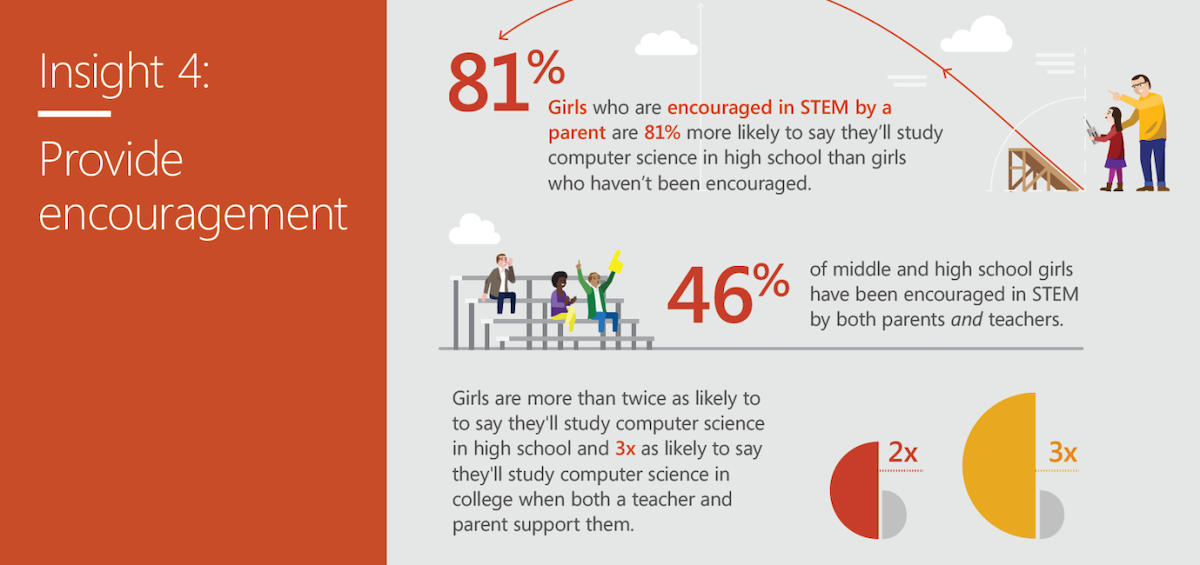Provide encouragement
Encouragement from educators and parents makes a big difference in girls’ interest in STEM, especially when it comes from both educators and parents.
66% of middle school girls who were encouraged in STEM by their educators say they're likely to study computer science in high school, compared to 40% who haven’t been encouraged. This research shows how impressionable girls are when making decisions.

Link to text version of infographic
So, what does authentic encouragement look like?
In a classroom setting, individual encouragement is difficult in a large class. However, it’s possible to adjust how educators give feedback so it’s more personalized. Educators want to have time to visit learners and engage with them, and they do this through demonstrating real-world job feedback like stand-up meetings. Meetings are short enough that chairs aren’t required, and educators visit with individual learners and give them encouragement as they struggle through a problem or follow through a task to completion. This may mean building individual seat time to give each learner an individual two-minute encouragement. Educators can use tools like OneNote Class Notebook to give learners feedback and then follow up for one minute in conferences to see if learners need clarification.
Parent/educator conferences: Talk with parents about the role of STEM knowledge in future careers and the importance of support and encouragement at home.
It’s important for fathers to support their daughters in this endeavor. Encouragement from dads has a consistently positive influence on a girl’s interest and likelihood to study STEM in the future.
Here are Top 10 ways families can encourage girls' interest in computing
Pause and ponder
Encouraging girls to try STEM and CS activities is most powerful when it comes from both educators and parents. What’s one strategy you could use to increase the level of encouragement at home and in the classroom?